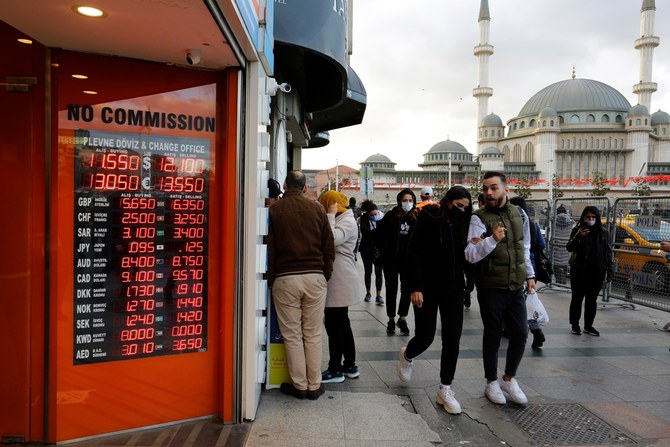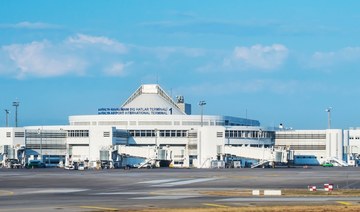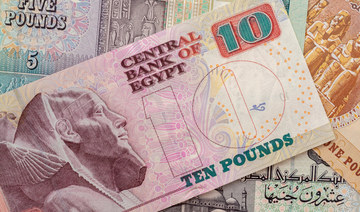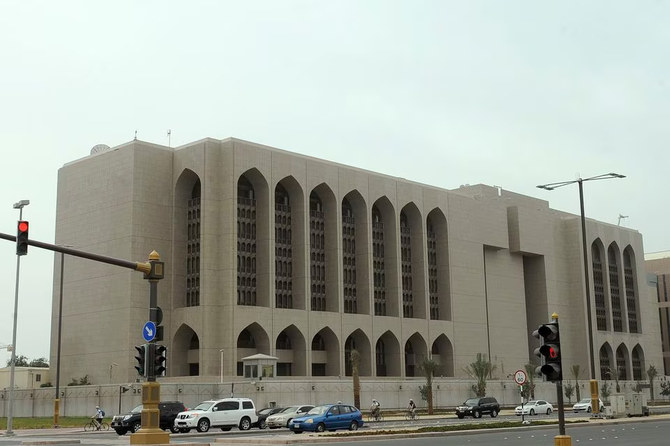ISTANBUL: Turkey’s central bank hiked its key rate by 650 basis points to 15 percent on Thursday and said it would go further in a reversal of President Tayyip Erdogan’s low-rates policy, although the post-election tightening missed expectations and the lira fell.
In its first meeting under new Governor Hafize Gaye Erkan, the bank changed course after years of loose policy in which the one-week repo rate had dropped to 8.5 percent from 19 percent in 2021 despite soaring inflation.
Analysts said the move suggested Erkan might have limited room to aggressively tackle inflation under Erdogan’s watch. The median estimate in a Reuters poll was for a rate hike to 21 percent.
Thirty minutes after the rate hike — Turkey’s first since early 2021 — the lira suddenly began to tumble, touching an all-time low of 24.31 versus the dollar.
The central bank’s policy committee said the tightening “will be further strengthened as much as needed in a timely and gradual manner until a significant improvement in the inflation outlook is achieved.”
Striking a more hawkish tone than a month earlier, it said it raised rates “in order to establish the disinflation course as soon as possible, to anchor inflation expectations, and to control the deterioration in pricing behavior.”
Annual inflation was just below 40 percent in May after touching a 24-year high above 85 percent in October last year. The central bank said inflation will come under further pressure.
It added that it will gradually “simplify and improve the existing micro- and macroprudential framework” to improve market mechanisms and macro stability — suggesting some of the dozens of regulations adopted since late 2021 could be rolled back.
Limited room for maneuver
Erdogan had urged rate cuts over the last two years which sparked a late-2021 currency crisis. The lira lost 44 percent in 2021 and 30 percent last year, despite the central bank’s efforts to counter forex demand by using its forex reserves.
After his election victory last month, Erdogan signaled he was ready to backtrack on economic policy in appointing Mehmet Simsek, who is highly regarded by markets, as finance minister and Erkan, a former Wall Street banker, as central bank chief.
Erdogan said last week he approved the steps Simsek would take with the central bank, suggesting he had given the green light to rate hikes.
The policy decision could indicate that “Governor Erkan has limited room for maneuver in restoring orthodoxy in monetary policy,” said Piotr Matys, senior FX analyst at InTouch Capital Markets.
“One could argue that it will take time to restore shattered confidence, but it would be more efficient to exceed expectations if Governor Erkan wants to convince investors that she is in charge of monetary policy and not President Erdogan,” he added.
Most economists in the Reuters poll expected further rate hikes this year, with the year-end forecast median at 30 percent. The central bank’s key rate remains below deposit rates that reach up to 40 percent and real rates are still deeply negative.
The central bank’s net reserves fell to a record low of negative $5.7 billion last month. They rebounded as Ankara loosened its grip on the forex market this month, sending the lira to all-time lows and bringing its losses to 23 percent this year.
The lira depreciation has stoked inflation since 2021, sending it to a 24-year high of 85.5 percent in October last year.
Some analysts have expressed doubt about Erdogan’s commitment to abandoning his unorthodoxy, citing examples of his previous shifts to orthodox policy only to quickly change his mind.
Authorities hope foreign investors and hard currency will return after a years-long exodus, potentially reducing the central bank’s need to intervene to keep the lira stable.
























